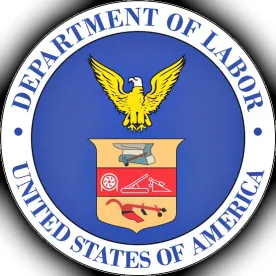Executive Order 12866 requires federal agencies to publish an agenda of regulations they plan to propose, promulgate, or review in the coming one-year period. The Department of Labor’s regulatory agenda showed ambitious goals for its agencies in 2022, as does President Biden’s Build Back Better Framework. Employers should brace themselves for increased enforcement activity from agencies such as the Equal Employment Opportunity Commission (“EEOC”), the Occupational Safety and Health Administration (“OSHA”), and the Office of Federal Contract Compliance Programs (“OFCCP”).
“As we enter 2022, the Department of Labor is continuing our efforts to empower workers morning, noon and night,” said Raj Nayak, U.S. Department of Labor Assistant Secretary, in a press release. Under the current Democratic administration, federal agencies have been bolstered by increased budgets and much-needed additions to staff. And, though Congress’ debate over the Build Back Better Act places the amount of extra enforcement funding in question, a push for workplace reform will continue.
Some of the announced priorities for the DOL this year include: creating more ladders to the middle class, increasing equity in the workforce, and ensuring safe and healthy workplaces. Enforcement agencies plan to effectuate these goals via a variety of initiatives. The EEOC, for instance, will continue its focus on systemic discrimination, and will investigate bias stemming from the use of artificial intelligence (“AI”) and algorithms in employment decisions. The OFCCP is similarly focused on systemic discrimination, in hiring and pay, and continues to refine its use of statistics in pay equity audits. As OFCCP noted in its fiscal year 2022 Congressional Budget Justification, “OFCCP’s work is more important than ever given our current economic situation. More than a year into the pandemic, millions of workers are still struggling.” OSHA, though dealing with the Supreme Court’s recent stay of its Emergency Temporary Standard (known as the OSHA vaccine mandate, see our prior blog), maintains a robust regulatory agenda with dozens of rules in pre-rule, proposed rule, and final rule stages.
Employers should also expect to see an increase in inter-agency cooperation, such as the new joint hiring initiative of the EEOC and OFCCP called “HIRE,” the Hiring Initiative to Reimagine Equity. HIRE is a multi-year effort to expand access to good jobs for underrepresented communities. There will be greater information sharing between agencies also, likely resulting in more coordinated enforcement efforts and an increase in referrals for investigation.
More details about the current federal regulatory agenda are available here, with the Department of Labor’s specific agenda here.





 />i
/>i
